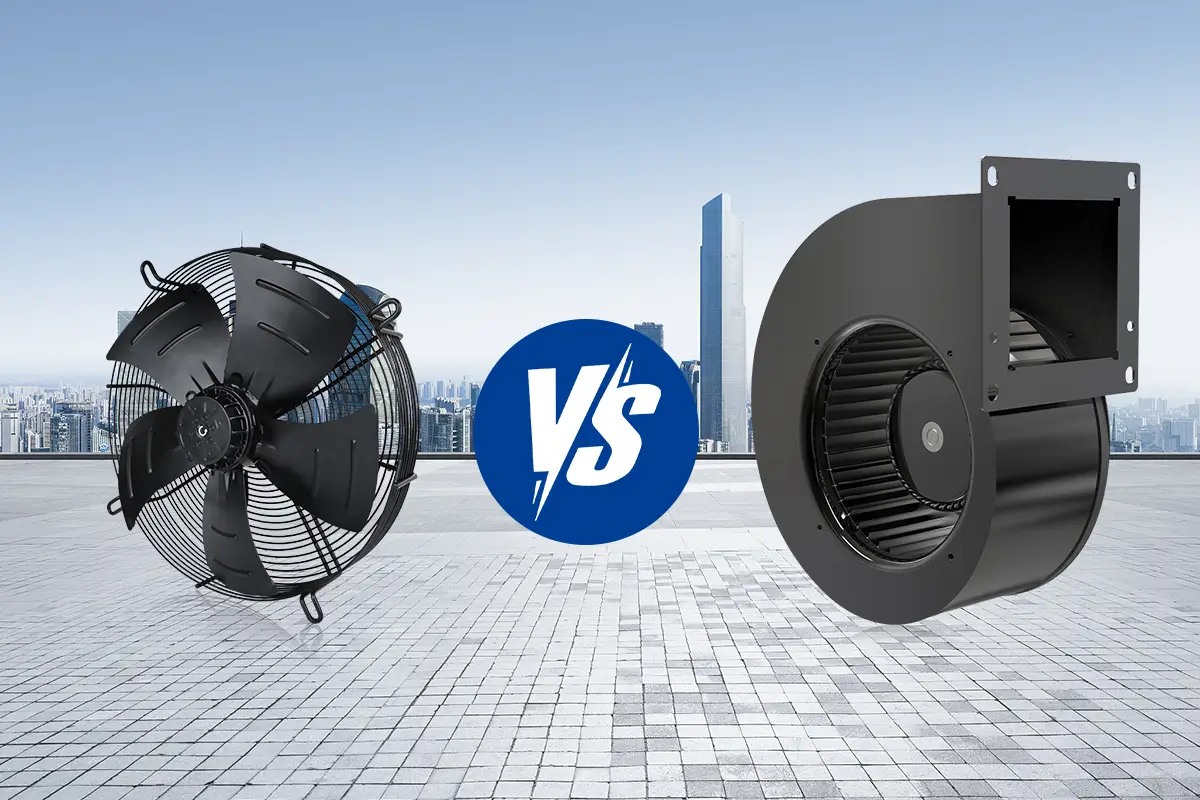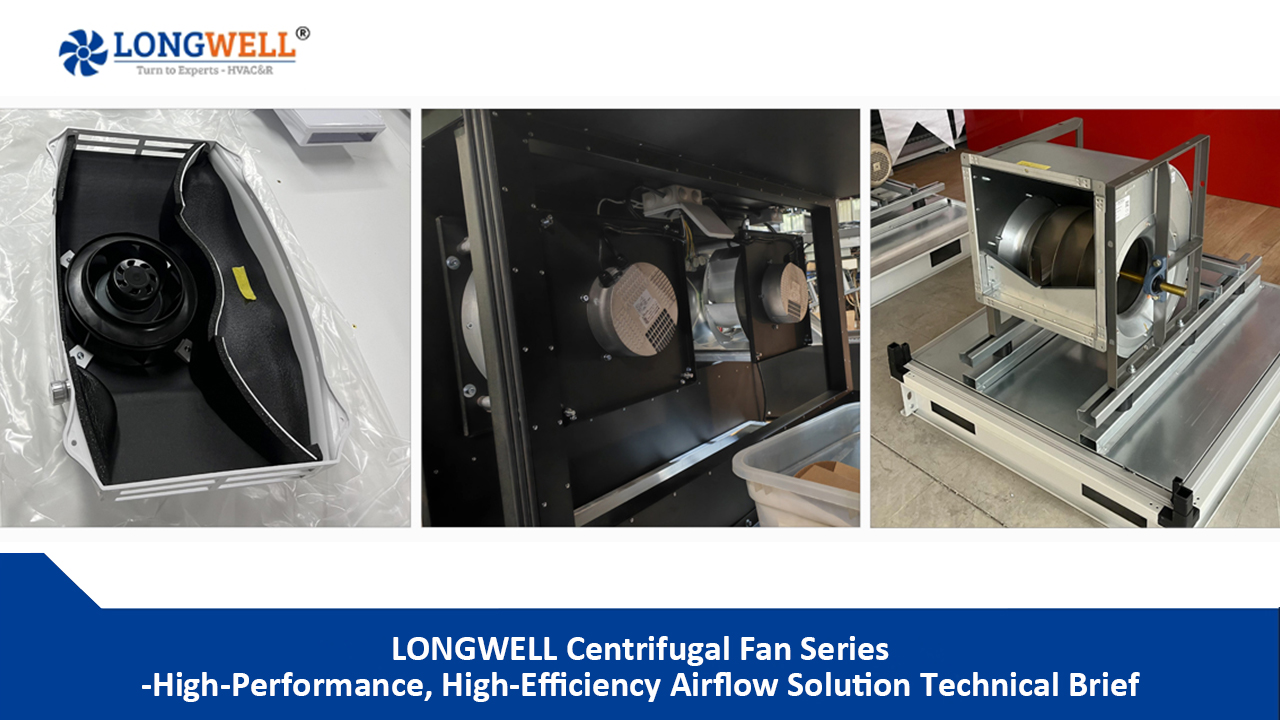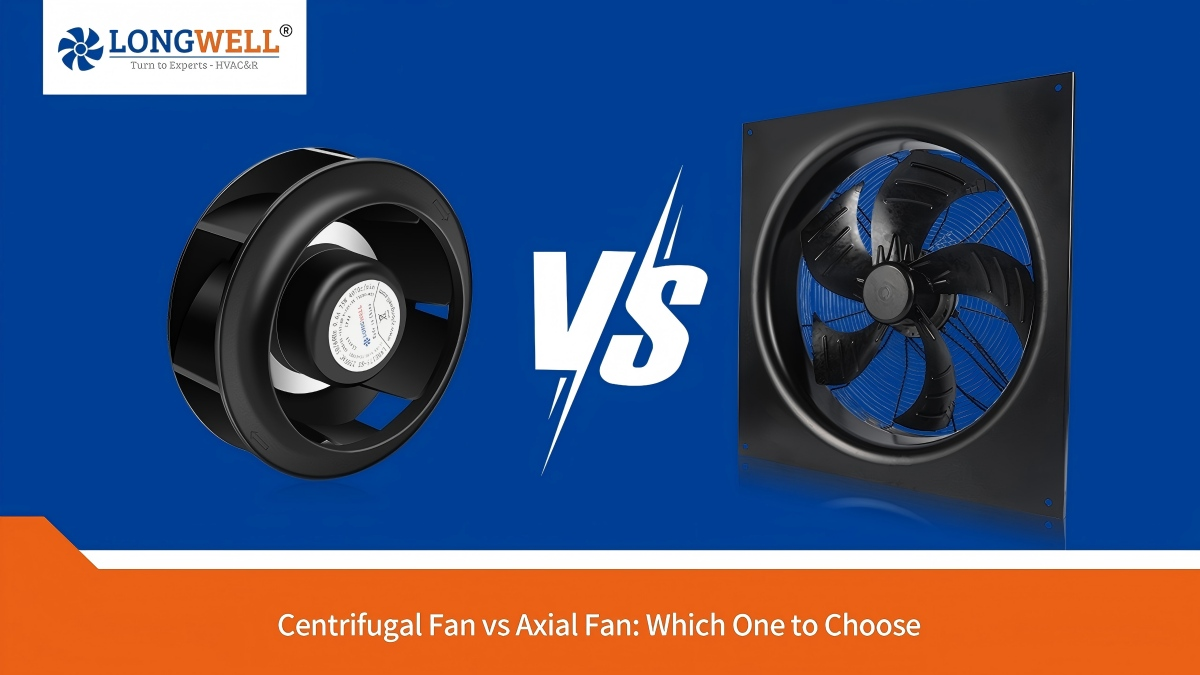Key Highlights
- Axial fans and centrifugal blowers represent two primary types of fans used in various applications.
- Axial fans excel at moving large volumes of air at low pressure, making them suitable for ventilation systems and cooling applications.
- Centrifugal fans, or blowers, generate higher pressure airflow, making them ideal for systems with ductwork, like air conditioning and drying systems.
- Understanding the differences in airflow dynamics, efficiency, and ideal use cases is crucial for selecting the right fan for a specific purpose.
- This comprehensive comparison aims to guide you in making an informed decision between axial fans and centrifugal blowers based on your requirements.
Introduction
In the world of industrial fans, there are two main types: the axial fan and the centrifugal blower. These fans are widely used in homes, businesses, and factories. Choosing the right one between these two types depends on knowing their specific features, strengths, and weaknesses. This guide will compare axial fans and centrifugal blowers. It will look at how they work, their performance, and the best ways to use them. This way, you will have the information you need to make the right choice.
Understanding Axial Fans and Centrifugal Blowers

Axial fans, also called propeller fans, work on a straightforward principle. Their blades look like those of an airplane propeller. They rotate around a central axis, pulling air movement parallel to that axis. This design helps move large volumes of air across shorter distances and usually against low pressure. You can find common examples of axial fans in ceiling fans, box fans, and computer cooling fans.
On the other hand, centrifugal fans use a different method for air movement. These fans have a bladed impeller that sits in a scroll-shaped casing. When the impeller spins, it pushes air outward, which creates a centrifugal force that boosts air pressure. Because of this, centrifugal fans, often called blowers, are great for tasks that need higher pressure airflow. They are commonly found in HVAC systems and industrial applications.
Key Characteristics of Axial Fans
The main feature of an axial fan is that it can move large volumes of air quite efficiently. This is due to its design, where the spinning blades push air straight forward. This helps to reduce resistance and increase airflow.
Axial fans can also work at higher operating speeds when compared to centrifugal fans. This helps them have a high flow rate, which is great for places that need quick air movement. But, the downside is that they can be noisier, especially when they run at high speeds.
Even though they are good at moving large volumes of air, axial fans do not create high pressure. Because of this, they are not the best option for systems with a lot of ductwork or where airflow faces different types of resistance.
Fundamental Aspects of Centrifugal Blowers
Centrifugal blowers stand out because they create higher pressure airflow unlike axial fans. This happens when the impeller spins, sending air out with centrifugal force. As the air moves through the blower, it gains speed and pressure.
Centrifugal blowers come in different types. Each type is designed for specific jobs. The common designs include backward-inclined, forward-curved, and radial blades. Each one is a bit different, balancing airflow, pressure, and efficiency in its own way.
One of the best features of centrifugal blowers is their high static efficiency. This means they are great at pushing past static pressure. Because of this, they work well in systems that have ductwork, filters, or other things that can slow down airflow.
Technical Comparison: Performance and Efficiency
Understanding the details of axial fans and centrifugal blowers means looking at how they move air and how well they work. These features affect where they can be used best and things like how much energy they use and how loud they are.
By comparing their benefits and drawbacks in these areas, we want to help you see how each type of fan works in various situations. This information will help you know which fan to choose for your needs.
Airflow Dynamics in Axial Fans vs. Centrifugal Blowers
Examining the airflow dynamics of both fan types reveals significant differences in their operational characteristics. Axial fans, with their propeller-like fan blades, excel at generating a high flow rate but at the expense of low pressure. This characteristic makes them suitable for applications where moving large volumes of air across short distances is paramount.
Centrifugal blowers, on the other hand, prioritize higher pressure generation. Their unique design, utilizing a rotating impeller within a housing, compresses air and directs it outward, resulting in a more focused and pressurized airstream. This makes them ideal for systems with ductwork or those requiring air to be moved against resistance.
|
Feature |
Axial Fan |
Centrifugal Blower |
|
Airflow Direction |
Parallel to axis |
Perpendicular to axis |
|
Pressure Generation |
Low |
High |
|
Flow Rate |
High |
Moderate |
|
Ideal Applications |
Ventilation, cooling |
HVAC, industrial processes |
Efficiency Metrics: Energy Consumption and Output
Energy efficiency is an important factor to think about when choosing types of fans. Generally, axial fans use less power than centrifugal blowers, especially when they run at lower speeds. This makes them a better option for jobs that need less pressure.
Yet, the situation changes when more pressure is needed. Even though centrifugal blowers usually take more power, they are more energy efficient in high-pressure situations. This is because they can create a strong, focused airstream, which cuts down on energy wasted on moving air that’s not needed.
So, the best choice depends on what you need. If you need low pressure and a high flow rate, an axial fan can be more efficient. But, if higher pressure is required, a centrifugal blower often offers better energy efficiency despite using more power.
Practical Applications and Suitability
The choice between axial fans and centrifugal blowers is more than just theory. It’s important to know where each works best in the real world. This knowledge helps you pick the right option for your needs.
Different fan types are suited for various tasks. For example, there are ventilation systems for homes and heavy-duty industrial fans for factories. By looking into how each fan is used, we can show which one fits different needs and environmental conditions.
Ideal Use Cases for Axial Fans
Axial fans are great at moving large volumes of air, even when pressure is low. They are widely used in many places where air circulation and cooling are important. Their simple design and efficient working make them a budget-friendly choice for many needs, such as:
- Ventilation Systems: Axial fans are used in homes, commercial settings, and factories to help with ventilation. They remove stale air, lower humidity, and keep the area comfortable.
- Cooling Electronics: Their small size and great cooling power make axial fans essential for cooling electronic parts in computers, servers, and other gadgets.
- Air Conditioning Units: While they are not as strong as centrifugal blowers, axial fans can work as condenser fans in some air conditioning units to help get rid of heat.
Where Centrifugal Blowers Shine
Centrifugal blowers can create airflow with high pressure. They work well in places where air needs to go through resistance, like ductwork. Their strong build allows them to operate in tough conditions. Here are some key uses for centrifugal blowers:
- HVAC Systems: These blowers are essential for heating, ventilation, and air conditioning systems. They move air through ducts and vents to help control temperature and improve air quality.
- Industrial Processes: Many industrial tasks, like drying systems and material handling, depend on the strong airflow from centrifugal blowers.
- Pollution Control: Centrifugal blowers are important in pollution filtration systems. They move contaminated air through filters and scrubbers to clean out pollutants.
Conclusion
In conclusion, it is important to know the differences between axial fans and centrifugal blowers. This knowledge helps you pick the right ventilation option. Axial fans are best for high airflow, while centrifugal blowers work well for higher pressure systems. The right choice depends on the needs of your project. You should think about energy consumption, noise levels, and maintenance costs to make a good decision. Both fan types have their benefits. They can improve airflow dynamics and boost energy efficiency. By matching your choice to your project needs, you can get good performance and save money. If you need more help choosing the right fan for your needs, feel free to reach out for a consultation.
Frequently Asked Questions
Which is more energy-efficient, axial fans or centrifugal blowers?
Determining which fan type is more energy efficient depends on the situation. Axial fans usually use less power when the pressure is low. In contrast, centrifugal blowers work better in high-pressure systems. This is because they can move air against resistance more effectively.
Can axial fans be used in industrial settings?
Yes, axial fans are used in industrial places. They are important for moving large volumes of air at low pressure. You can find them in ventilation systems, cooling machines, and other tasks that need a lot of airflow.
How do noise levels compare between the two fan types?
Axial fans usually make more noise than centrifugal blowers, especially when they run at high speeds. Still, the design and how each fan operates can affect how loud they are.
Are centrifugal blowers more expensive than axial fans?
Typically, centrifugal blowers cost more at first than axial fans that are similar in size and airflow. This price difference shows that centrifugal blowers have a more complex design and stronger build.
Which fan type is easier to maintain and repair?
Axial fans are easier to take care of because they have a simple design. They usually need less maintenance and repair compared to centrifugal blowers. Still, both fan types can last for years of use if they are maintained well.



